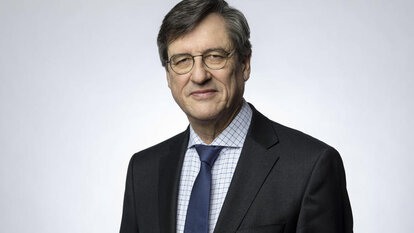Germany
German Reunification, 30 Years Later: A Success Story

It’s the economy, stupid: Bill Clinton’s famous phrase applies to German reunification, and more specifically to the question of whether the project has succeeded or failed. Almost all observers critical of the developments in the last 30 years ultimately base their respective opinions on economic data. Do the naysayers have a point? In my opinion: no. Those who apply realistic – as opposed to utopian – benchmarks should easily see that German reunification, as far as economic results are concerned, has been a success.
What is the situation in the East today? The answer can be summarized in five major bullet points:
1. The value created per person employed
In East Germany (including Berlin), this amounts to 84 percent of the West German equivalent, considering all sectors. In manufacturing, the corresponding number is 73 percent. The wage level in the East is 90 percent of that in the West across all sectors, and 80 percent and rising in manufacturing. It is notable that—following a lengthy disruption in the run-up to and in the aftermath of the world financial crisis—the reduction of the wage gap has been accelerating in recent years.
2. The Migration Balance
between East and West—economic policymakers ‘main headache for a long time—has stopped being negative with regards to the East in 2012. In recent years, more people are arriving than leaving. This may be linked to the fact that the job market has been improving all over Germany, but in the East even more so than in the West. Whether this trend will survive the COVID-19 epidemic is still an open question.
3. The Cities of East Germany
have stopped shrinking. Since 2010 they have, on the contrary, been growing — all of them. While the Berlin-Potsdam metropolitan area is gaining the fastest, the greater Leipzig and greater Dresden area are benefiting too, and so are Chemnitz, Erfurt and Jena, Halle and Magdeburg, as well as Rostock. The growth does come at the expense of rural areas, but this is no different than the situation in the West German states. There is a general trend towards urbanisation. Time will tell whether COVID-19 will slow down or even stop this current.
‘Surveys indicate that most East Germans are very happy with their personal quality of life and with German reunification.’

4. Right in the middle of the East there is a great engine
of growth: Berlin. Among the states of Germany, the city state of Berlin has exhibited the most dynamic economic growth since the 2000s. It outperforms even Baden-Württemberg and Bavaria. The gravitational pull of the metropolis and its population of 3.6 million is enormous. A regional economic hub of central and eastern German cities is emerging, with Berlin at its centre. Its potential could be even greater if not for the provincialism of Berlin‘s politicians.
The mood in the East
is far better than pessimist politicians believe. Surveys indicate that most people are very satisfied with their personal quality of life as well as with German reunification in general. The remaining wage gap between East and West is considered unfair but acceptable until such time as economic power has been equalised. The Germans surveyed expect – wisely – that said equalisation will be reached for at least another generation.
Conclusion
A lot has already been achieved but we are not yet at the end of the road to harmonisation. In particular, the central and eastern German economy still lags behind the West in terms of innovative power. The share of profits allocated to R&D in the larger eastern states is a puny 41 percent of its equivalent in the West. Even in Berlin, the number does not exceed 69 percent. There are three times as many patent applications per capita and year in western states as there are in Berlin – and five times as many as in the other eastern states. Part of the reason for this is the structure of the East German economy, which can claim few large corporations and in which even mid-tier companies are significantly smaller than mid-tier companies in the West. An aggravating factor is the dearth of DAX-listed corporations headquartered in the East.
The goal for the coming years therefore must be to initiate an Eastern Awakening of sorts in research and development, focusing on a new culture of entrepreneurship that will create its own innovation base in turn. There is at least one lever, which the German state controls: economic development and stimulus payments. The system needs to promote—even more now than in the past—creative forces in collaboration with science and economy, as opposed to mere job creation. The former rust belt of North Rhine-Westphalia could serve as a role model here: the Ministry of Economy and Innovation under the leadership of the Liberal Andreas Pinkwart has made the region soar to the top in terms of measure of innovative power.
One central aspect in this endeavour is the strengthening of research infrastructure, especially regarding technological fields. We need a new Gründerzeit – not just in Berlin but radiating out to university cities 150 or 200 kilometres away, radiating out in fact to the old lignite mining regions, which are facing a second great structural transformation in any case. An example is the greater Cottbus area. Cottbus already has a university focused on technology. Government subsidies earmarked for facilitating the lignite phase-out should be able to expand the institution. For the time being, the East is still the ‘extended workbench‘ of the West — a region mostly used for manufacturing, which explains the West-East gap regarding value created per capita as well as the wage gap. Step by step, this has to change. It will take good policy, as well as time.
Building a culture of innovation is a widespread problem, as it happens, including in post-Socialist central Europe. The Czech Republic for instance, was able to achieve a manufacturing renaissance much like that of East Germany: export-oriented, but an ‘extended workbench‘ in structural terms, with wage levels far below those in the West. In 2017, gross wages in the Czech Republic amounted to 42 percent and 31 percent of gross wages in East and West Germany, respectively. This alone shows that the Aufbau Ost, the post-unification rebuilding of East Germany, is paying off. But it needs to be followed by an Aufbruch Ost, an awakening of a culture of innovation.
Willy Brandt famously proclaimed that German reunification was a coming together of that which belongs together. An Aufbruch Ost is the only way he can be truly proven right.
Karl-Heinz Paqué is the chairman of the board of the Friedrich Naumann Foundation for Freedom and professor of international economy at the University of Magdeburg.
